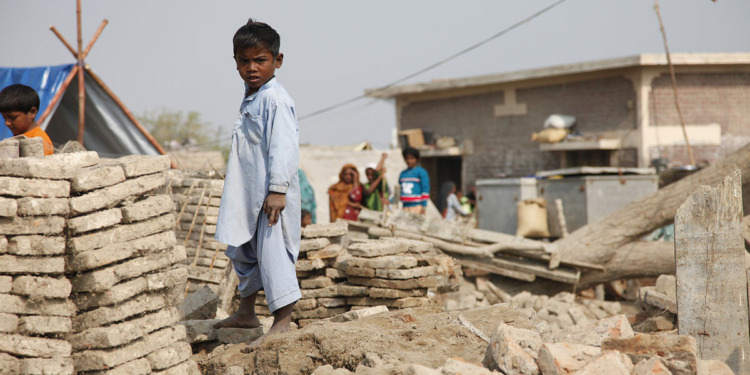The first global analysis of weather-related displacement of children reveals a shocking number: 43.1 million children were displaced between 2016 and 2021.
The report, Children Displaced in a Changing Climate, published by the United Nations Children’s Fund (UNICEF), highlights that the displacements occurred in 44 countries, with an average of 20,000 child displacements daily.
Why do we need urgent child-focused #ClimateAction?
In the last six years, weather-related disasters have displaced 43.1 million children. That’s nearly 20,000 children every day.
This is what UNICEF is asking decision-makers to do to protect them. https://t.co/tZIwOtO4N9
— UNICEF (@UNICEF) October 6, 2023
The main reasons behind the displacements are storms, floods, droughts and wildfires. The first two accounted for 95% of all the displacements, while all four together account for 99%. Extreme heat, erosion and landslides make up the rest.
“It is terrifying for any child when a ferocious wildfire, storm or flood barrels into their community,” said UNICEF Executive Director Catherine Russell. “For those who are forced to flee, the fear and impact can be especially devastating, with worry of whether they will return home, resume school, or be forced to move again.”
The Philippines, India, and China are the three countries with the highest number of displaced children: between 2016 and 2021, a total of 23 million children were displaced in these three countries.
All three countries, prone to storms and floods, implement pre-emptive evacuations, which help save lives and mitigate the effects of climate-induced displacements.
Their populations may explain the large number of displaced children. If we look at the number of displaced children in relation to the size of the child population, Somalia and South Sudan are at the top of the list, with about 11% and 12% of children displaced between 2016 and 2021, respectively.
Although Africa contributes only 2-3% of global greenhouse gas emissions, it disproportionately suffers from climate change.
Intensified extreme weather events are forcing people to flee their homes. pic.twitter.com/jQFbqG6mLp
— UN Environment Programme (@UNEP) August 31, 2023
Children in countries with pre-existing crises, such as poverty and violence, face a higher displacement risk. Haiti, for example, due to violence and poverty, has limited investment in risk mitigation and preparedness, albeit being at a high risk of disaster-related child displacement.
As a result of displacement, children can be separated from their families, increasing the risk of falling victim to child abuse, trafficking, and exploitation. Moreover, they have fewer chances of accessing quality education and healthcare. Finally, they might also be evacuated to overcrowded, climate-vulnerable areas.
Related articles: UN’s Landmark Decision: Children’s Right to Sue Over Climate | On Taking Children Seriously: Climate Strikes | The Unbearable Situation of Children in Armed Conflicts Around the World
The Internal Displacement Monitoring Centre developed a disaster displacement risk model to predict the number of displaced children in the next decades. The results are horrifying.
In the next 30 years, based on current climate data, almost 96 million children have the potential to be displaced due to floods; in the same period, 10.3 million and 7.2 million children, respectively, are at risk of displacement because of cyclonic winds and storms.
UNICEF stresses the importance of protecting, preparing, and prioritizing children and young people to improve the conditions of those at risk of weather-related displacements. Governments and public and private sectors need to prepare children to live in a climate-changed world and put them at the top of our priorities list.
Although weather events are indeed natural phenomena, there is a growing consensus that human activity is changing these events’ characteristics. Human-induced climate change modifies the “frequency, intensity, geographic range, duration, and timing of extreme weather events.”
#StormDaniel in Libya has displaced thousands of children, destroyed critical infrastructure and impacted children and families.
As climate-related displacement grows, we need leaders to take immediate #ClimateAction to protect displaced children and the services they rely on. pic.twitter.com/rV3UFyWhzp
— UNICEF (@UNICEF) October 6, 2023
The extreme weather and catastrophes the world has been witnessing in recent years only seem to be getting worse with time. Immediate action is needed to address climate change because — if we do not, the consequences will be even more devastating.
As the report highlights, “with every additional one degree Celsius of warming, the global risks of displacement from flooding are projected to rise by approximately 50%.”
Editor’s Note: The opinions expressed here by the authors are their own, not those of Impakter.com — In the Featured Photo: A child stands amongst the remains of buildings destroyed by the floods in Sindh province, Pakistan, 2010. Featured Photo Credit: DFID – UK Department for International Development.










